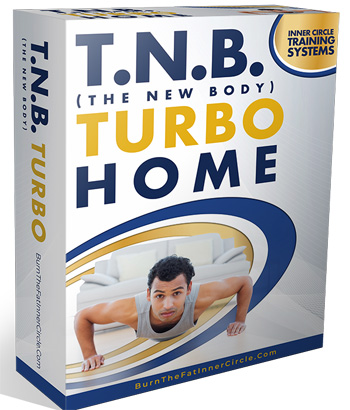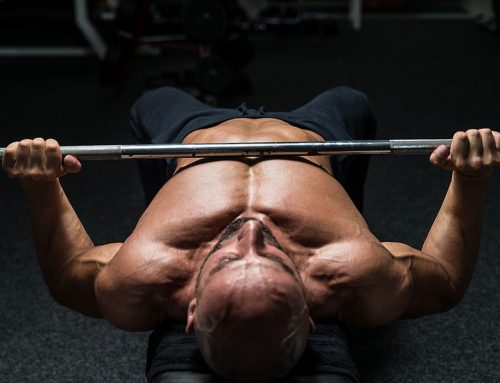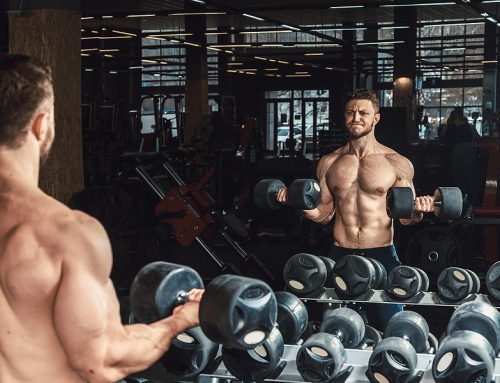Fitness and bodybuilding pros are willing to put in long hours of training if they know that kind of time investment will help them fulfill 100% of their muscular growth potential. But what if you don’t have much time? For most recreational trainees, training for hours is not an option. Between family and work obligations alone, the average busy man or woman may feel it’s a challenge to squeeze in any training at all. Efficient, but effective workouts are a must.
Are Supersets The Single Most Efficient Training Tactic?
Scientific research combined with decades of experience have confirmed that superset training is more time efficient than traditional set training and in some cases, it can be more effective.
Even before research on supersets was ever published, world-class bodybuilders had already figured it out. Superset training was a favorite technique of the bodybuilding champions in the 60s and 70s Golden Era, including Mr. America Dave Draper and the one and only Arnold Schwarzenegger.
Given the many advantages and nearly non-existent disadvantages, I’ll go out on a limb and say that I believe superset training is one of the most efficient and useful weight training techniques of all time.
An Official Definition Of Supersets
Superset training has been around for decades and almost everyone who lifts weights has heard of it. However, most people are confused about the right way to do it.
One reason for the confusion is because there are so many variations of supersets going by so many different names. If you googled “supersets” and started reading some of the web pages, or if you asked ten different trainers, you might find that every expert tells you something different.
Even if you went to an authoritative source and read the scientific papers, you might see that superset protocols tested in research may be different from how Arnold and the great bodybuilders did it.
There’s one point that everyone agrees on regarding the definition of a superset:
A superset is defined as performing two different exercises (a pair) in a row with little or no rest in between, rather than doing all your sets of one exercise one after another, with full rest periods in between every set, and then moving on to the next exercise.
Traditional weight training is done with “straight sets,” where you take a rest break between every set. The usual advice is to rest 1 to 3 minutes between each set. For large muscles, the rest interval could be on the shorter side (a minute) and for compound exercises and larger muscles, the rest interval is more often 2 or 3 minutes.
After the rest break, you do another set of the same exercise, and repeat again for your desired number of sets (typically 3 to 5 sets per exercise). Only then do you move on to the next exercise.
The rest interval between sets is what allows your muscles to recover most of your strength before you do another set. When doing straight sets, if you didn’t take the rest interval or if your rest interval was too short, you wouldn’t be able to do as many reps on the second and third sets, and you might even have to reduce the weight because fatigue would accumulate and interfere with your performance as the workout went on.
What Makes Supersets So Time Efficient?
That brings us to the other point when it comes to defining classic supersets: A superset is not just two different exercises done one after the other, it’s two different exercises done back to back with little or no rest in between the paired exercises. For example, you do a bicep curl, then with little or no rest, you do a tricep extension. Only after finishing the second exercise (extensions) do you take the usual rest break.
In contrast, there’s a strength training system called “alternating sets” which instructs you to take full rest intervals in between pairs of opposite muscle exercises. This defeats the primary benefit of the classic superset method, which is getting an effective workout in less time.
Reducing or cutting out the rest interval between each pair of exercises is what makes superset training time-efficient.
How “little” rest should there be in between the two different exercises?Usually, you move immediately to the second exercise, so the only rest is the number of seconds it takes to get to the next exercise station.
For example, if you’re supsersetting chin ups and bench presses, where there are two different exercise stations, when you finish on the chin up bar, you walk straight over to the bench. The amount of time it takes to get there is all the rest you take. Unless you have to cross a warehouse-sized gym for your second exercise, it’s usually about 10 to 20 seconds or so. If it takes you a minute to start the second exercise, it’s not a superset.
It helps if your equipment is nearby and set up in advance. You should also understand that supersetting in a crowded gym is sometimes difficult and you may need to be flexible and switch exercises to make it work. It’s not impossible though – using a training system like TNB TURBO, this gym training problem has been solved by choosing pairs of exercises in a special way. Here’s an example:
Occasionally you can do two exercises back to back with literally zero rest in between, but that only happens when you’re using the same equipment and the same weight for two exercises. For example, you might superset dumbbell bicep curls to lying dumbbell tricep extensions and not even put the dumbbells down in between.
After you complete each pair of exercises back to back, that counts as one superset, then you take a rest interval (usually 1 to 2 minutes) before doing the next superset.
For even more time efficiency, some people shorten or cut out the rest interval after each superset, (30 to 45 seconds, etc). That’s an option, but it has one potential downside. The ideal goal of superset training is to get the same workload done in less time. If you shorten the rest periods too much, you might be trading a super-short workout for a loss of volume or strength. If strength is a priority, the full rest interval should be maintained. When fat loss or metabolic effect is a priority, you can make the rest intervals shorter if you prefer.
Supersets Versus Standard (Straight) Set Structured
It helps to see an example, so below, let me show you what a typical workout looks like for superset versus traditional training for a chest and back workout.
Traditional (“straight set”) Training
Barbell Bench Press set 1
Rest interval: 2 – 3 minutes
Barbell Bench press set 2
Rest interval: 2 – 3 minutes
Barbell Bench press set 3
Rest interval: 2 – 3 minutes
Barbell Bent Over Row set 1
Rest interval: 2 – 3 minutes
Barbell Bent Over Row set 2
Rest interval: 2 – 3 minutes
Barbell Bent Over Row set 3
Rest interval: 2 – 3 minutes
Antagonist Superset Training
Barbell Bench press set 1
Little or no rest
Barbell Row set 1
Rest interval: 1 – 2 minutes
Barbell Bench press set 2
Little or no rest
Barbell Row set 2
Rest interval: 1 – 2 minutes
Barbell Bench press set 3
Little or no rest
Barbell Row set 3
Rest interval: 1 – 2 minutes
(Note: In this example there is only one exercise for each muscle. In advanced programs there might be two or even three exercises for each muscle).
Essential Superset Types And Terminology
Some people refer to supersets as “paired set” strength training. Others call it “reciprocal set training.” I’ve seen researchers call it “compound sets” or “complex sets” (I think these are confusing names that should be dropped because “paired sets” is more descriptive). As mentioned earlier, supersetting is also confused with alternating sets, which is used for strength and power, not time efficiency.
Let’s make this official: When we talk about doing two different exercises back to back in a pair with little or no rest in between, we are going to stick to the classic name – supersets. Why? Because that name has been used for decades in bodybuilding, and this report is about efficient muscle building and physique training, not powerlifting. Plus, I’m old school, and if the term superset was good enough for Arnold, it’s good enough for me).
There are different types of supersets, however, and the ideal method depends on your goals and preferences, and is only limited by your creativity.
In theory, you could combine any two exercises together and call that a superset. An upper body exercise paired with a lower body exercise could be considered a superset (aka “separated” superset). Doing a set of (boring) calves or abs in between sets of chest could also be considered a superset (the Golden Era bodybuilders called that “staggered” sets).
There are two major categories of supersets you need to know about, and they are based on what muscles are paired together:
1. Same muscle group supersets
A same muscle group superset is exactly what the name implies: two different exercises for the same muscle, done back to back in a pair. Below is an example for the deltoids. Notice how both exercises work the same muscle:
Dumbbell shoulder press set 1
Little or no rest
Dumbbell lateral raise set 1
Dumbbell shoulder press set 2
Little or no rest
Dumbbell lateral raise set 2
Dumbbell shoulder press set 3
Little or no rest
Dumbbell lateral raise set 3
This technique is used mostly for bodybuilding and physique training because it pushes a single muscle to total fatigue, increases metabolic stress, and forces a lot of blood into one area, creating an enormous pump. The downside is that you typically can’t use as much weight, especially on the second exercise, so this type of superset is considered less effective for strength goals. It is equally time efficient though.
2. Antagonistic (opposite) muscle supersets
The most popular, and arguably most effective type of superset is the antagonistic muscle superset. This also has different names and is sometimes called an agonist-antagonist, reciprocal, or opposite muscle group superset. We’re going to stick with antagonist superset as the official name.
You’ve already seen one example – the chest exercise paired with the back exercise (the opposite muscle). Here’s another example of a very popular antagonistic superset pair:
Barbell bicep curl set 1
Little or no rest
Barbell tricep extension set 1
About 1 minute rest
Barbell bicep curl set 2
Little or no rest
Barbell tricep extension set 2
About 1 minute rest
Barbell bicep curl set 3
Little or no rest
Barbell tricep extension set 3
About 1 minute rest
For the rest of this article, we are going to stay focused mostly on the antagonistic superset. Why? Because it’s the most popular method, it’s the most researched, and it offers the most benefits for the widest variety of people, including building muscle, increasing strength and improving time efficiency.
Let’s go over the entire list of benefits so you can see how powerful this this technique can be.
Top 10 Benefits Of Antagonist Supersets
1. Time Efficiency.
The biggest benefit of all types of superset training is time efficiency. Using supersets, you might reduce your training time a little or a lot. If your entire workout uses nothing but supersets, the time savings can be enormous.
In one study out of The University of Sydney In Australia, which was published in the Journal of Strength and Conditioning Research, the superset protocol achieved the same volume load as traditional training in half the time.
This is an important point: Superset training did not simply reduce the training time, it allowed the lifters to achieve the same workload in half the time!
The researchers made a very confident recommendation, writing, “The results of research to date overwhelmingly suggest that superset training is a time-efficient method to develop strength (and muscle).”
2. More engaging and enjoyable.
Many people feel that superset training is much more engaging than traditional training (some even say it’s fun).
Strength athletes get used to training at a slower pace, taking longer rest intervals between sets – sometimes as long as 3 to 5 minutes. They must do that so they can recover completely and let fatigue dissipate in between sets. Then they can lift the maximum amount of weight each set without reps dropping off.
On the other hand, I’ve lost count of how many regular people (not interested in powerlifting) have told me they get bored out of their minds sitting around doing nothing between sets for even two minutes, let alone 3 minutes or more. A person can argue all they want, and cite all the studies they want about how longer rest periods are technically “superior,” but those “slow” types of strength training programs leave a lot of people unmotivated, disinterested and ready to drop out.
From psychology and behavior studies, one thing we know about all kinds of exercise is that the best program is not the best program, the best program is the one you stick with long-term. If your training enjoyment is enhanced, your compliance will improve and in the long run, your results will be better, even if the program isn’t textbook “optimal.”
3. Improved health.
It’s well-established in the research that traditional resistance training isn’t just for getting big and strong, it’s also great for your heart, lungs, bones, blood sugar, blood pressure, immunity and mental health. Since superset training provides the same benefits as traditional training, then superset training is equally healthy.
In fact, superset training may have additional health benefits, because superset training can be more metabolically demanding.
4. Increased strength.
You can get stronger using superset programs that require as little as half the time of traditional set training. Whether superset training is more effective than traditional set training is still being debated and researched, but there are some theories about how it’s possible.
One theory is fatigue reduction. When you do straight sets, your muscles build up fatigue metabolites with each passing set. When you do antagonistic supersets, you don’t train the same muscle two sets in a row – you alternate between opposite muscles – so one muscle is resting while the other muscle is working. Because you take a full rest period after the second exercise, the total amount of recovery time between working each muscle could actually be greater than with straight sets.
If you wanted to increase the time efficiency of a workout, you might get the idea to cut all your rest intervals to under a minute, maybe even to 30 seconds. You could do that and finish a workout faster even doing straight sets (it’s called “density” training), but when it comes to strength, that’s not as effective as antagonistic superset training.
Super short rest intervals between the same exercises compromise the amount you can lift, and the total amount of volume may actually drop.
Sufficient rest intervals between sets for the same muscle are necessary to resynthesize intramuscular phosphocreatine and adenosine triphosphate (ATP) and to remove metabolites detrimental to muscular work. With antagonistic supersets, while one muscle is working, the opposite muscle is resting, so you can maintain your strength while still getting the workout done in a short amount of time.
Other theories about how antagonistic supersets increase strength include enhanced reciprocal inhibition, which means there is less interference (“braking”) of opposite muscles when worked right after one another, and that the stretch reflex and stored elastic energy within the agonist muscle group may be responsible for additional force being produced.
5. Increased muscle growth.
With antagonistic superset training, research shows that you can gain muscle and do it with much shorter workouts than traditional straight set training. It’s hard to say for sure if antagonist supersets are more effective than straight set training for muscle building, but it’s certainly possible.
How? For the reasons mentioned above, certain antagonist supersets actually improve your performance on the second exercise.
Another reason is simply that antagonist supersets allow for good strength gains, and if you get stronger, and all else remains equal, then the increased muscular tension from heavier weights will build bigger muscles.
It’s also possible that increased metabolic stress may enhance muscle growth (metabolic stress is one of the triggers of muscle growth and can be achieved even when you’re not lifting more weight).
6. More calories burned.
Most people train for many reasons, including muscle growth, strength, fat loss and cardio conditioning. Knowing your goals and putting them in the order of importance helps you choose training programs and tactics. If fat loss is a higher priority for you than strength, you may want to choose a weight training style that’s more metabolic in nature and burns the most calories possible.
A study from Syracuse University that was published in the Journal of Strength and Conditioning Research discovered that antagonistic supersets increased the exercise calories burned and post-exercise oxygen consumption (EPOC), which means metabolism was more stimulated after the workout was over.
This means, supersetting is an excellent choice of training system when fat loss is your goal, especially when you superset compound exercises.
7. Increased metabolic effect while maintaining the strength and muscle-building benefits.
If you want time efficient fat loss, you might consider circuit training or metabolic weight training. Those methods are engaging and can increase the calorie burn, which makes them good choices for fat loss and fitness conditioning goals. But the downside is this type of training may cause a reduction in poundage lifted, so they’re less effective for building strength and muscle.
In essence, circuit training is doing “cardio with lighter weights,” which by definition, means it’s no longer as productive for building strength and muscle. Supersets on the other hand, when performed in the antagonist style, provide the best blend of strength, muscle, and metabolic conditioning that a single training method can deliver – and it’s still time efficient as well.
8. Higher intensity.
High intensity training tactics include training to failure, forced reps, drop sets, rest pause sets, continuous tension reps, static holds, eccentric reps and many others.
Supersets can also be considered a high intensity training tactic because the effort level required to perform two exercises back to back with little or no rest – especially compound exercises – is greater than doing two exercises with a rest period. There is more fatigue, more metabolic stress and more time under tension, which are factors that contribute to muscle growth.
9. Overload.
Supersets can be an excellent method of progressive overload.
Simply taking your current routine and combining all the exercises into superset pairs rather than straight sets alone can create an overload by increasing intensity of effort and metabolic effect.
If you add one or more additional exercises and superset them with the exercises you were already doing, you are overloading by adding volume. Because there’s little or no rest between supersets, you can still finish in the same time or even less time, and the density of the workout increases, which is yet another form of overload.
10. Muscular balance.
Some trainers like to highlight one more benefit of antagonistic superset training: antagonist training assures that you train both sides of the body (or a joint) equally for better muscle size and strength balance. This may help reduce injury risk, and achieve complete muscular development, which is needed for bodybuilding and physique sports.
Examples of antagonistic superset pairs
As you can see, superset training has an amazing list of benefits, and at this point, you’re probably pretty excited about getting to the gym and trying it. So let’s shift gears from the theory, to the practical and how to set up a superset workout.
Remember, the broad definition of a superset is any two exercises combined in a pair, with little or no rest in between.
However, to do antagonistic superset training, you have to pair opposite muscles with each other.
These are the most common body part pairings
Chest and back
Biceps and triceps
Quadriceps and hamstrings
Abs and lower back
Rear deltoid and front/side deltoid (Lesser used: forearm flexors and forearm extensors; calves and tibialis anterior)
Supersetting chest and back is a classic combination made famous by Arnold. It’s easy to see that opposite muscles are paired (and it may be an opposite movement pattern as well: horizontal push paired with horizontal pull.
Biceps and triceps are also a wildly popular superset, and these two muscles are clearly on opposite sides of the arm so this too is an antagonistic superset opportunity. Of course, the quadriceps and hamstrings also make a perfect opposing muscle combination for supersetting.
Abs and lower back are reciprocal muscle groups and are trained with opposite movement patterns – flexion and extension. This combination is not quite as popular for supersets, but is certainly an option. Even the forearms can be trained with antagonistic supersets by pairing wrist curls with reverse wrist curls.
More rarely done is antagonistic supersetting for calves. The primary lower leg muscles – the gastrocnemius and soleus – are trained with calf raises, where you rise up on the balls of your feet. Many people don’t know that the muscle in the front of the calf – the tibialis anterior – can be trained with a special machine found in some gyms or with a portable device called a dynamic axial resistance device (DARD). It’s somewhat of a novelty and typically only competitive bodybuilders needing more calf development bother training both sides of the lower leg. But it can be done efficiently with antagonistic supersets.
It’s worth noting that the deltoids are slightly different in structure and function than the other paired muscles that are listed. The deltoids are a single muscle group, but they are separated into three heads, the front deltoid, side deltoid and rear deltoid.
Therefore, we could say that the rear deltoids are opposite the front deltoids and that rear deltoid exercises are pulling movements and front/side deltoid exercises are pushing movements. So some people consider it an antagonist superset if you pair a bent over lateral raise for the rear deltoid with a shoulder press or dumbbell front raise for the front deltoids.
With that said, the side deltoids don’t have a directly opposite muscle to train, the way biceps and triceps or chest and back make perfect pairs on opposite sides of the joint. When you want to superset deltoids, you can simply use the same muscle group superset technique and pair up any two shoulder exercises you choose (examples: Overhead press superset to lateral raise, or bent over rear lateral raise to standing lateral raise).
On that note, keep in mind that a training program doesn’t have to be limited to one type of superset. We’ve been focusing mostly on the popular antagonistic superset, but there’s no reason you can’t include antagonistic muscle supersets and same muscle group supersets in the same workout.
Choosing A Split Routine That Works With Antagonist Supersets
If you’re doing a full body workout, you can use any type of superset. If you’re using split routines, the exercises you can pair are limited by what body parts you train each day.
Arnold Schwarzenegger was famous for his bicep / tricep supersets and his chest / back supersets. To duplicate Arnold’s program, you have to train biceps and triceps on the same day, and chest and back on the same day. This is my “3-Day Classic Muscle System.
If you were using a split routine that had these muscles on separate days, you would have to change your training schedule first before starting the superset program.
For advanced bodybuilding, one of the most ideal split routines for antagonistic superset training is the 3-day Classic Muscle split:
Day 1: Chest, back, abs
Day 2: Shoulders, biceps, triceps
Day 3: Quads, hamstrings calves
Day 4: Rest
Repeat the cycle
* Note: this does not fit evenly into a 7-day calendar week
As you can see, this 3-day body part split is tailor-made for antagonist superset training. If you wanted to, you could set up the entire workout with supersets. This schedule is ideal for bodybuilders and other advanced lifters with physique goals (not a beginner routine).
For general muscle-building and fitness, the 2-day split with workouts divided into an upper body day and a lower body day is also perfect for antagonistic superset training:
Day 1: Upper body (chest, back, shoulders, biceps, triceps)
Day 2: Lower body and abs (quads, hamstrings, calves, abs)
Day 3: rest
Day 4: Upper body (chest, back, shoulders, biceps, triceps)
Day 5: Lower body and abs (quads, hamstrings, calves, abs)
Day 6: rest
Day 7: rest
Repeat the cycle
* Note: this fits evenly into a calendar week
Using antagonistic supsersets is a popular technique on this 2-day program, especially on upper body day, which can be a long workout if you do all straight sets.
On upper body day, if you superset your biceps and triceps as well as your chest and back (you could superset deltoids as well), you might finish that workout in half the time with no decrease in effectiveness compared to straight sets.
Putting It All Together Into A Complete Training Program
The superset technique is flexible. You can customize your own workouts, and if you wish, you can do do an entire workout in supersets, which would be the ultimate in time efficiency, or you can superset only certain body parts . For example, if you wanted to get your workout done quickly and also put some extra emphasis on building your arms, you could superset biceps and triceps, but train the rest of your body with straight sets.
This guide has gone into detail to make sure you have all the information about the antagonistic superset system you need to go ahead and start using it today. This is a training technique I strongly recommend you learn, experiment with and master.
So go give it a try at your next workout. It could be as simple and trying just one superset, like the bicep curl to tricep extension pairing. If you have any questions, either right now before you give it a go, or after you’ve tried it, post in the comments below and I’ll be happy to help.
If you’re interested in trying a complete 14-week training program built entirely on antagonist supersets and designed to build more muscle with as little as half the time in the gym, check out “The New Body (TNB) TURBO.”
Thousands of people are already saving time while building more muscle by using this workout plan and it’s available exclusively at Burn the Fat Inner Circle: CLICK HERE FOR TNB TURBO
Your coach,
Tom Venuto
PS. The Original TNB TURBO superset training program was designed for gym training, and shows you how to superset successfully even in a crowded gym (which used to be a big problem for people training in gyms at peak hours). The complete TNB TURBO package also now includes “TNB TURBO HOME” as a bonus. Even if you only have minimal equipment, even only dumbbells, you can still use this workout plan and by training at home, you save even more time by skipping the commute to the gym: CLICK FOR TNB TURBO
Scientific References
Carregaro RL et al, Effects of antagonist pre-load on knee extensor isokinetic muscle performance.J Sports Sci. 2011 Feb;29(3):271-8.
Castanheira RP et al. Effects of synergist vs. Non-synergist split resistance training routines on acute neuromuscular performance in resistance trained men. J Strength Cond Res. 31(12): 3482–3488, 2017.
Kelleher, A, et al, The Metabolic Costs of Reciprocal Supersets Vs. Traditional Resistance Exercise in Young Recreationally Active Adults, Journal of Strength and Conditioning Research, 24(4), 1043-1051.
Maia, M.F., et al., Effects of different rest intervals between antagonist paired sets on repetition performance and muscle activation. J Strength Cond Res, 2014. 28(9): p. 2529-35
Robbins, D, et al, The Effect of An Upper Body Agonist – Antagonist Resistance Training Protocol on Volume Load And Efficiency, Journal of Strength and Conditioning Research, 24:10, 2632-2640.
Robbins D, et al, Physical Performance And Electromyographic Responses to an Acute Bout of Paired Set Strength Training Versus Traditional Strength Training, Journal of Strength and Conditioning Research, 24(5), 1237-1245.
Robbins D, et al Agonist-Antagonist Paired Set Resistance Training: A Brief Review, Journal of Strength And Conditioning Research, 14(10, 2873-2882.
Rooney, K, et al, Fatigue Contributes To the Strength Training Stimulus. Medicine and Science in Sports And Exercise, 26, 1160-1164.
Schoenfeld, B, The Use of Specialized Training Techniques to Maximize Muscle Hypertorphy, Strength and Conditioning Journal, 33(4), 60-65.
Learn more time saving resistance training techniques: Burn The Fat Inner Circle Guide To Time Efficient Training









Leave A Comment